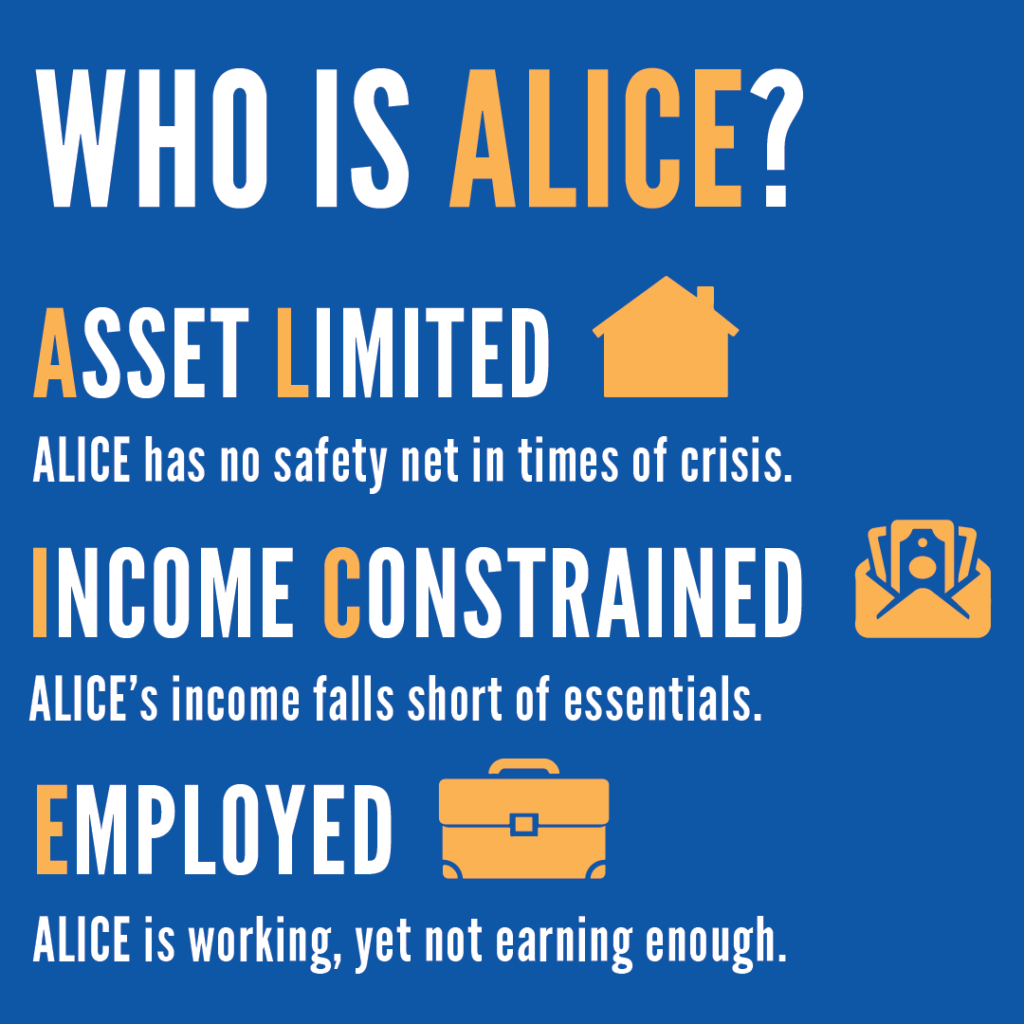There were 243,485 Maine households unable to afford the state’s high cost of living in 2021, according to the ALICE Report released this month by United Ways of Maine. The Report was released in partnership with United For ALICE, a U.S. research organization driving innovation, research, and action to improve life across the country for people in financial hardship.
ALICE in Maine: A Study of Financial Hardship places a spotlight on a large population of hardworking residents who work at low-paying jobs, have little or no savings, and are one emergency away from falling into poverty. ALICE stands for Asset Limited, Income Constrained, Employed. The Report is the most comprehensive depiction of financial need in the state to date, using the latest data from a variety of sources, including the U.S. Census. The Report unveils new measures, based on 2021 income levels and expenses, that quantify how many in Maine’s workforce are struggling financially, and why.
In 2021, a total of 172,502 Maine households fell into what United Way calls the ALICE population. These are households earning more than the official U.S. poverty level, but less than the basic cost of living. This number was more than double the official poverty rate, which accounted for 70,983 households in the state. Combined, ALICE households and households in poverty fell below the ALICE Threshold of Financial Survival and accounted for 42% percent of all households in Maine.
“We all know ALICE,” said Courtney Yeager, United Ways of Maine spokesperson and President & CEO, of United Way of Kennebec Valley. “ALICE is the recent college graduate unable to afford to live on their own, the young family strapped by child care costs and the mid-career professional now underemployed. These folks are vital to our state’s future economic well-being, and they face barriers beyond their control – impeding their ability to become financially stable.”
The Report is a project of United For ALICE, a grassroots movement of United Ways, corporations, nonprofits, and foundations in more than half the United States, all using the same methodology to document financial need. ALICE Reports provide county-by-county data and analysis of how many households are struggling, including the obstacles ALICE households face on the road to financial independence.
“This Report provides the objective data that explains why so many residents are struggling to survive and the challenges they face in attempting to make ends meet,” said the Report’s lead researcher, United For ALICE National Director Stephanie Hoopes, Ph.D. “Until now, the true picture of need in local communities and states has been understated and obscured by misleading averages and outdated poverty statistics.”
The ALICE Report reveals:
- Households below the ALICE Threshold span all races, ages, and genders. Yet for certain groups, the struggle is disproportionate. For example, 59% of Black and 44% of Hispanic households in Maine were below the ALICE Threshold in 2021, compared to 41% of white households.
- Because wages had stagnated for a decade, 34% of the state’s 17,820 retail sales workers lived below the ALICE Threshold in 2021.
- Of Maine’s 16 counties,13 had 40 percent or more households unable to make ends meet in 2021. The average income needed to survive in Maine depends on local conditions and ranged from $63,000 to $81,000 annually for a family of four, which is 2-3 times the official U.S. poverty level.
- Even with the variety of temporary pandemic supports available, in 2021, a family of four with two full-time workers earning salaries as a retail salesperson and a personal care aide – two of the most common occupations in Maine – fell short of affording their basic expenses by $14,456.
Read the ALICE Report for Maine.
“We cannot effectively address a problem unless we have an accurate understanding of its scope. We have long known that the poverty rate understates the level of need in our community, but we haven’t always known by how much,” said Nicole Witherbee, President & CEO of the John T. Gorman Foundation. “The ALICE Report for Maine provides a true picture of what’s happening for our families, shedding light on the 42% of Maine households struggling to afford the basics. The report provides the tools and insights we need to better serve these families, so they have their best chance to thrive.”
ALICE often is forced to make choices that compromise health and safety to make ends meet, said Yeager, putting both ALICE and the wider community at risk of long-term societal and economic repercussions.
“When ALICE chooses unlicensed child care or longer commutes or emergency room health care in order to put food on the table, we all suffer the consequences with future costs to our education system, heavier traffic and higher premiums,” said Yeager. “United Way is committed to providing long-term solutions that will strengthen our communities.”
United Way is focused on providing the foundation in the areas of education, financial stability, and health to help improve the lives of both ALICE and those in poverty, for the long-term benefit of the wider community.
The ALICE Report for Maine was funded in part by the John T. Gorman Foundation.
For more information or to find data about ALICE in local communities, visit aliceinmaine.org.
